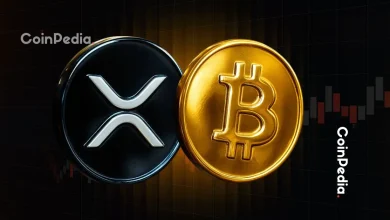
South Korea Legalizes Stablecoins: New law sets clear rules for stablecoin issuance, making South Korea a global regulatory leader.
US Faces Delays on GENIUS Act: As South Korea acts, the U.S. still debates stablecoin regulation, risking innovation flight.
South Korea has taken the lead on stablecoin regulation. On June 10, the country passed the Digital Asset Basic Act, allowing companies to issue stablecoins under clear rules—while the US still struggles to finalize its own legislation.
South Korea Legalizes Stablecoins
Under the new law:
- Companies can issue stablecoins with a minimum capital of 5 million won (~US$367,876).
- All stablecoins must be approved by the Financial Services Commission (FSC).
- Issuers must guarantee refunds via reserves to protect users.
This move makes South Korea one of the first major economies to fully legalize stablecoins.
US Stablecoin Bill Faces Delays
Meanwhile, the US is preparing for a long-awaited vote on its GENIUS Act. The bill aims to:
- Set federal and state-level rules for stablecoin issuers.
- Enforce strong anti-money laundering (AML), Know Your Customer (KYC), and anti-fraud measures.
However, political opposition remains.
Senator Elizabeth Warren warned:“The bill invites scammers into the market…”
Senator Bill Hagerty responded: “It’s time we provide the clarity and stability our innovators need.”
Key Differences: GENIUS Act vs Digital Asset Basic Act
| Feature | US GENIUS Act | South Korea Digital Asset Basic Act |
| Scope | Payment stablecoins only | All digital assets + stablecoins |
| Approval authority | Federal for issuers >$10B; State for smaller | All stablecoins require FSC approval |
| Compliance requirements | AML, KYC, anti-fraud, transparency | Transparency + reserve guarantees |
What’s Next? Tether and Circle Dominate
Global stablecoin demand is surging:
- Market projected to hit $254B in 2025, and $2T by 2028.
- In South Korea, stablecoin trading on five domestic exchanges already hit ₩57T.
- Globally, Tether (USDT) and Circle (USDC) dominate with an 85% market share—USDT at $150B, USDC at $16B.
As South Korea opens its market, and the US races to finalize its bill, the global stablecoin landscape is about to shift dramatically.
Never Miss a Beat in the Crypto World!
Stay ahead with breaking news, expert analysis, and real-time updates on the latest trends in Bitcoin, altcoins, DeFi, NFTs, and more.
FAQs
It’s a new law legalizing stablecoins with FSC approval, capital rules, and user protection via reserve guarantees.
The GENIUS Act focuses on payment stablecoins, while Korea’s law covers all digital assets and mandates FSC approval.
Tether (USDT) and Circle (USDC) lead globally, holding about 85% of the stablecoin market share.
Trust with CoinPedia:
CoinPedia has been delivering accurate and timely cryptocurrency and blockchain updates since 2017. All content is created by our expert panel of analysts and journalists, following strict Editorial Guidelines based on E-E-A-T (Experience, Expertise, Authoritativeness, Trustworthiness). Every article is fact-checked against reputable sources to ensure accuracy, transparency, and reliability. Our review policy guarantees unbiased evaluations when recommending exchanges, platforms, or tools. We strive to provide timely updates about everything crypto & blockchain, right from startups to industry majors.
Investment Disclaimer:
All opinions and insights shared represent the author's own views on current market conditions. Please do your own research before making investment decisions. Neither the writer nor the publication assumes responsibility for your financial choices.
Sponsored and Advertisements:
Sponsored content and affiliate links may appear on our site. Advertisements are marked clearly, and our editorial content remains entirely independent from our ad partners.








